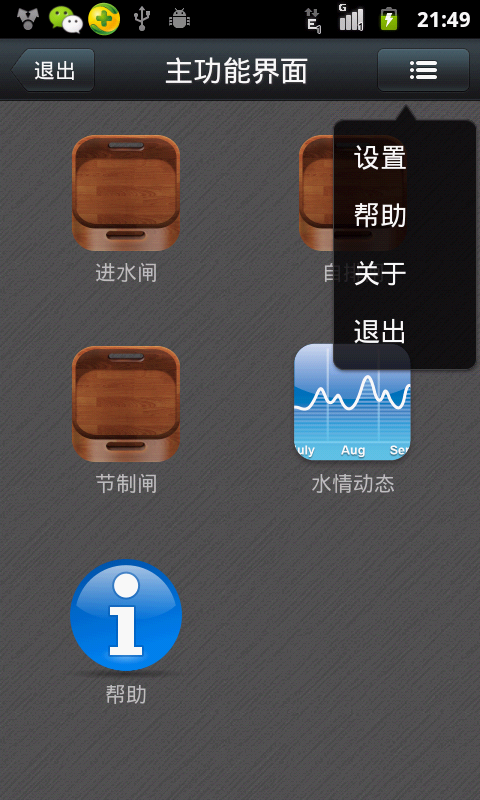編輯:關於Android編程
// 啟動service
Intent intent = new Intent(instance, RecommendService.class);//新建一個可以執行當前context操作的Intent
intent.putExtra("userInfoBody", userInfoBody);
intent.putExtra("isDynamic", true);
intent.putExtra("content", comment);
if (!TextUtils.isEmpty(sayhiOrCollect)) {
intent.putExtra("sayhiOrCollect", sayhiOrCollect);
}
PendingIntent sender = PendingIntent.getService(instance, 1, intent, PendingIntent.FLAG_UPDATE_CURRENT);//第一個參數是context,第二個參數是區分不同intent的區別碼,第三個參數是intent,第四個是發送了兩個相同的
//PendingIntent時如何處理數據和intent,具體見下面的參數介紹
long firstTime = SystemClock.elapsedRealtime();
firstTime += 1 * 1000;
// Schedule the alarm! 16 * 60 * 1000
AlarmManager am = (AlarmManager) getSystemService(ALARM_SERVICE);
am.setRepeating(AlarmManager.ELAPSED_REALTIME_WAKEUP, firstTime, 10 * 60 * 1000, sender);//AlarmManager參數含義見下面的說明
注意:兩個PendingIntent相同是指它們的operation一樣, 且其它們的Intent的action, data, categories, components和flags都一樣。但是它們的Intent的Extra可以不一樣。因此會出現intent攜帶的內容無法更新的問題,解決途徑是設置 PendingIntent.FLAG_UPDATE_CURRENT 代碼中getService()方法最後一個參數的主要常量有: FLAG_CANCEL_CURRENT:如果當前系統中已經存在一個相同的PendingIntent對象,那麼就將先將已有的PendingIntent取消,然後重新生成一個PendingIntent對象。 FLAG_NO_CREATE:如果當前系統中不存在相同的PendingIntent對象,系統將不會創建該PendingIntent對象而是直接返回null。 FLAG_ONE_SHOT:該PendingIntent只作用一次。在該PendingIntent對象通過send()方法觸發過後,PendingIntent將自動調用cancel()進行銷毀,那麼如果你再調用send()方法的話,系統將會返回一個SendIntentException。 FLAG_UPDATE_CURRENT:如果系統中有一個和你描述的PendingIntent對等的PendingInent,那麼系統將使用該PendingIntent對象,但是會使用新的Intent來更新之前PendingIntent中的Intent對象數據,例如更新Intent中的Extras。 2、AlarmManager的常用方法有三個: (1)set(int type,long startTime,PendingIntent pi); 該方法用於設置一次性鬧鐘,第一個參數表示鬧鐘類型,第二個參數表示鬧鐘執行時間,第三個參數表示鬧鐘響應動作。 (2)setRepeating(int type,long startTime,long intervalTime,PendingIntent pi); 該方法用於設置重復鬧鐘,第一個參數表示鬧鐘類型,第二個參數表示鬧鐘首次執行時間,第三個參數表示鬧鐘兩次執行的間隔時間,第三個參數表示鬧鐘響應動作。 (3)setInexactRepeating(int type,long startTime,long intervalTime,PendingIntent pi); 該方法也用於設置重復鬧鐘,與第二個方法相似,不過其兩個鬧鐘執行的間隔時間不是固定的而已。 3、三個方法各個參數詳悉: (1)int type: 鬧鐘的類型,常用的有5個值:AlarmManager.ELAPSED_REALTIME、 AlarmManager.ELAPSED_REALTIME_WAKEUP、AlarmManager.RTC、 AlarmManager.RTC_WAKEUP、AlarmManager.POWER_OFF_WAKEUP。 AlarmManager.ELAPSED_REALTIME表示鬧鐘在手機睡眠狀態下不可用,該狀態下鬧鐘使用相對時間(相對於系統啟動開始),狀態值為3; AlarmManager.ELAPSED_REALTIME_WAKEUP表示鬧鐘在睡眠狀態下會喚醒系統並執行提示功能,該狀態下鬧鐘也使用相對時間,狀態值為2; AlarmManager.RTC表示鬧鐘在睡眠狀態下不可用,該狀態下鬧鐘使用絕對時間,即當前系統時間,狀態值為1; AlarmManager.RTC_WAKEUP表示鬧鐘在睡眠狀態下會喚醒系統並執行提示功能,該狀態下鬧鐘使用絕對時間,狀態值為0; AlarmManager.POWER_OFF_WAKEUP表示鬧鐘在手機關機狀態下也能正常進行提示功能,所以是5個狀態中用的最多的狀態之一,該狀態下鬧鐘也是用絕對時間,狀態值為4;不過本狀態好像受SDK版本影響,某些版本並不支持; (2)long startTime: 鬧鐘的第一次執行時間,以毫秒為單位,可以自定義時間,不過一般使用當前時間。需要注意的是,本屬性與第一個屬性(type)密切相關,如果第一個參數對 應的鬧鐘使用的是相對時間(ELAPSED_REALTIME和ELAPSED_REALTIME_WAKEUP),那麼本屬性就得使用相對時間(相對於 系統啟動時間來說),比如當前時間就表示為:SystemClock.elapsedRealtime();如果第一個參數對應的鬧鐘使用的是絕對時間 (RTC、RTC_WAKEUP、POWER_OFF_WAKEUP),那麼本屬性就得使用絕對時間,比如當前時間就表示 為:System.currentTimeMillis()。 (3)long intervalTime:對於後兩個方法來說,存在本屬性,表示兩次鬧鐘執行的間隔時間,也是以毫秒為單位。 (4)PendingIntent pi: 綁定了鬧鐘的執行動作,比如發送一個廣播、給出提示等等。PendingIntent是Intent的封裝類。需要注意的是,如果是通過啟動服務來實現鬧鐘提 示的話,PendingIntent對象的獲取就應該采用Pending.getService(Context c,int i,Intent intent,int j)方法;如果是通過廣播來實現鬧鐘提示的話,PendingIntent對象的獲取就應該采用 PendingIntent.getBroadcast(Context c,int i,Intent intent,int j)方法;如果是采用Activity的方式來實現鬧鐘提示的話,PendingIntent對象的獲取就應該采用 PendingIntent.getActivity(Context c,int i,Intent intent,int j)方法。如果這三種方法錯用了的話,雖然不會報錯,但是看不到鬧鐘提示效果。 4.上面代碼中 RecommendService.class 類的具體內容:
public class RecommendService extends IntentService {
@Override
protected void onHandleIntent(Intent intent) {
}
}
該intentService的優勢在於會按順序執行被定時器多次啟動的發送過來的intent的操作,並且耗時的intent操作不用在新建子線程,因為intentSevice已經為每個intent建立workThread。
 Android ViewPager實現選項卡切換
Android ViewPager實現選項卡切換
本文實例介紹了ViewPager實現選項卡切換,效果圖如下:步驟一:這裡使用兼容低版本的v4包進行布局,這裡eclipse沒有輸入提示,所以要手動輸入,文件名稱“acti
 Android編程之ICS式下拉菜單PopupWindow實現方法詳解(附源碼下載)
Android編程之ICS式下拉菜單PopupWindow實現方法詳解(附源碼下載)
本文實例講述了Android編程之ICS式下拉菜單PopupWindow實現方法。分享給大家供大家參考,具體如下:運行效果截圖如下:右邊這個就是下拉菜單啦,看見有的地方叫
 android自定義輸入框
android自定義輸入框
效果如圖中藍框所框 0){ editText.setText(defaultText); } editText.setEnabled(isReadOnl
 簡單實現android短信發送器
簡單實現android短信發送器
先看看效果圖:activity_main.xml<RelativeLayout xmlns:android=http://schemas.android.com/a